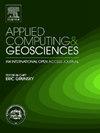电离层体积图像的高效计算和可视化,以增强非相干散射雷达数据的解释
IF 3.2
Q2 COMPUTER SCIENCE, INTERDISCIPLINARY APPLICATIONS
引用次数: 0
摘要
非相干散射雷达(ISR)技术为电离层等离子体分析提供了可靠的测量方法。ISR技术的最新发展使高分辨率3D数据的生成成为可能。这种技术的例子采用了所谓的相控阵天线系统,如北美的AMISR系统或即将在北芬诺斯坎迪亚地区推出的EISCAT_3D。EISCAT_3D将能够生成有史以来最高分辨率的ISR数据集。我们提出了一种新的快速计算策略,用于生成代表ISR数据的高分辨率和平滑的体积电离层图像。通过实时处理,我们的计算框架将能够在监测过程中快速决策,在雷达监测特定现象时实时调整实验参数。实时监测将使雷达波束能够方便地指向感兴趣的区域,从而增加科学影响。我们描述了我们的策略,它实现了一个灵活的网格生成器以及一个专门用于ISR技术的高效插值器。所提出的策略是通用的,因为它可以应用于各种各样的数据集,并支持电离层数据的交互式可视化分析和探索,辅以交互式数据转换和过滤器。本文章由计算机程序翻译,如有差异,请以英文原文为准。
Efficient computation and visualization of ionospheric volumetric images for the enhanced interpretation of Incoherent scatter radar data
Incoherent scatter radar (ISR) techniques provide reliable measurements for the analysis of ionospheric plasma. Recent developments in ISR technologies allow the generation of high-resolution 3D data. Examples of such technologies employ the so-called phased-array antenna systems like the AMISR systems in North America or the upcoming EISCAT_3D in the Northern Fennoscandia region. EISCAT_3D will be capable of generating the highest resolution ISR datasets that have ever been measured. We present a novel fast computational strategy for the generation of high-resolution and smooth volumetric ionospheric images that represent ISR data. Through real-time processing, our computational framework will enable a fast decision-making during the monitoring process, where the experimental parameters are adapted in real time as the radars monitor specific phenomena. Real-time monitoring would allow the radar beams to be conveniently pointed at regions of interest and would therefore increase the science impact. We describe our strategy, which implements a flexible mesh generator along with an efficient interpolator specialized for ISR technologies. The proposed strategy is generic in the sense that it can be applied to a large variety of data sets and supports interactive visual analysis and exploration of ionospheric data, supplemented by interactive data transformations and filters.
求助全文
通过发布文献求助,成功后即可免费获取论文全文。
去求助
来源期刊

Applied Computing and Geosciences
Computer Science-General Computer Science
CiteScore
5.50
自引率
0.00%
发文量
23
审稿时长
5 weeks
 求助内容:
求助内容: 应助结果提醒方式:
应助结果提醒方式:


